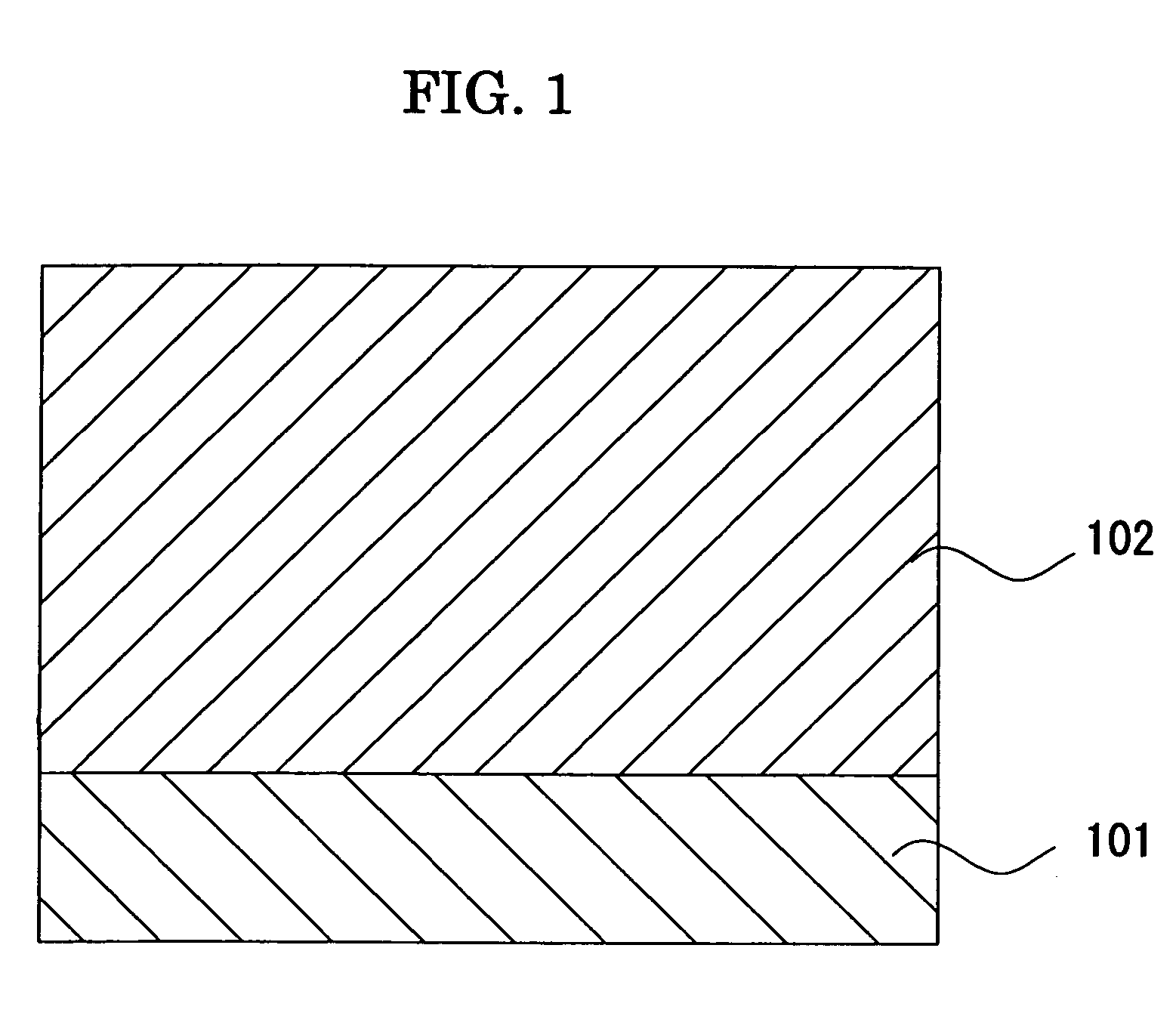Image forming apparatus, image forming process, and process cartridge for image forming apparatus
- Summary
- Abstract
- Description
- Claims
- Application Information
AI Technical Summary
Benefits of technology
Problems solved by technology
Method used
Image
Examples
example 1
of Photoconductor Production
[0243] A coating liquid for undercoat layer was prepared as follows: 150 parts of an alkyd resin (Becolite M6401-50, by Dainippon and Chemicals, Co.) and 10 parts of melamine resin (Super Beckamine G-821-60, by Dainippon and Chemicals, Co.) were dissolved into 150 parts of methylethylketone, and titanium oxide powder (Tie Pail CR-EL, by Ishihara Sangyo Co. Ltd.) was added to the solution, then the mixture was subjected to milling for 12 hours to prepare a coating liquid for undercoat layer.
[0244] The coating liquid was coated on an aluminum substrate of 90 mm in diameter by 392 mm in length, and dried at 130° C. for 120 minutes, to form an undercoat layer in 3.5 μm thick.
[0245] Then 4 parts of polyvinylbutyral resin (XYHL, by UCC Co.), having formula (1) shown below, was dissolved into 150 parts of cyclohexane.
[0246] Then, 10 parts of bisazo pigment was added to the silution, and was subjected to dispersion by means of a ball moll; then 210 parts of c...
example 2
of Photoconductor Production
[0252] Photoconductor 2 was prepared in the same manner as Photoconductor 1, except for changing the resin of formula (A) into the resin of formula (B). [0253] (l, m: mole ratio, l=0.32, m=0.68)
Comparative Example 1 of Photoconductor Production
[0254] Comparative Photoconductor 1 was prepared in the same manner as Photoconductor 1, except for changing the resin of formula (A) into the bisphenol Z type polycarbonate resin.
PUM
| Property | Measurement | Unit |
|---|---|---|
| Temperature | aaaaa | aaaaa |
| Temperature | aaaaa | aaaaa |
| Length | aaaaa | aaaaa |
Abstract
Description
Claims
Application Information
 Login to View More
Login to View More - R&D
- Intellectual Property
- Life Sciences
- Materials
- Tech Scout
- Unparalleled Data Quality
- Higher Quality Content
- 60% Fewer Hallucinations
Browse by: Latest US Patents, China's latest patents, Technical Efficacy Thesaurus, Application Domain, Technology Topic, Popular Technical Reports.
© 2025 PatSnap. All rights reserved.Legal|Privacy policy|Modern Slavery Act Transparency Statement|Sitemap|About US| Contact US: help@patsnap.com



